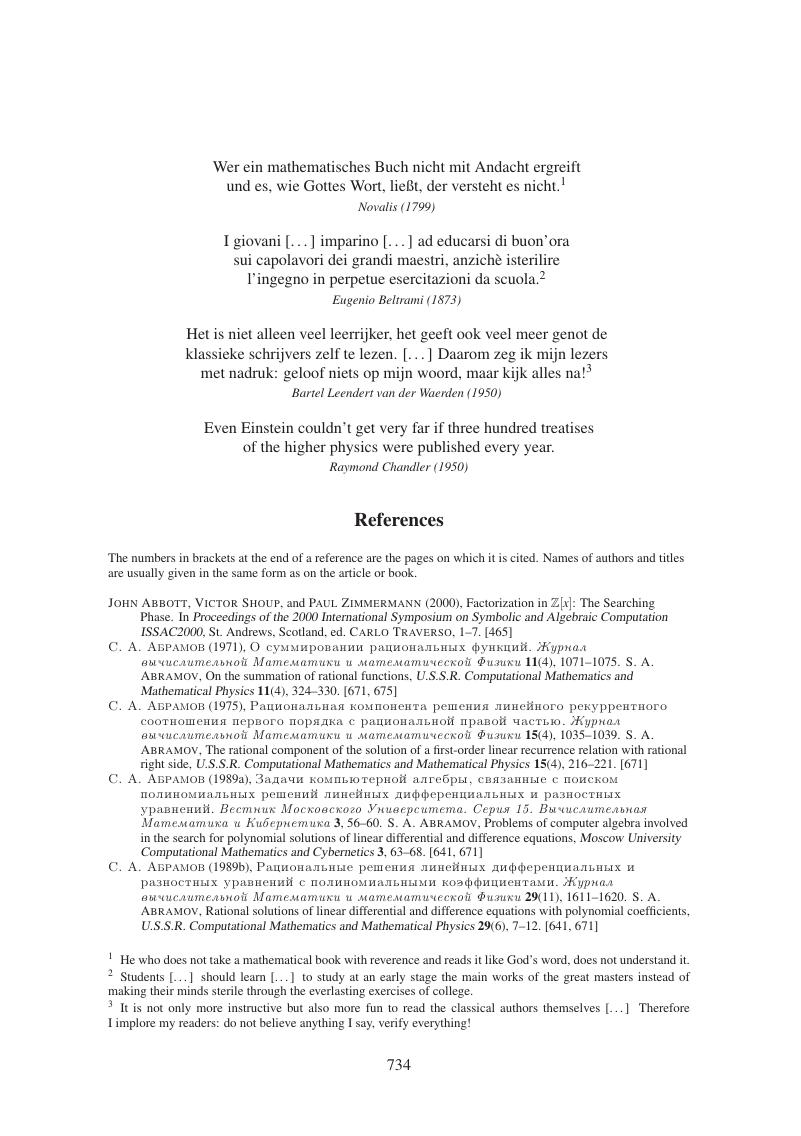Book contents
- Frontmatter
- Contents
- Introduction
- 1 Cyclohexane, cryptography, codes, and computer algebra
- I Euclid
- II Newton
- III Gauß
- IV Fermat
- V Hilbert
- Appendix
- Sources of illustrations
- Sources of quotations
- List of algorithms
- List of figures and tables
- References
- List of notation
- Index
- The Holy Qur'ān (732)
- References
References
Published online by Cambridge University Press: 05 May 2013
- Frontmatter
- Contents
- Introduction
- 1 Cyclohexane, cryptography, codes, and computer algebra
- I Euclid
- II Newton
- III Gauß
- IV Fermat
- V Hilbert
- Appendix
- Sources of illustrations
- Sources of quotations
- List of algorithms
- List of figures and tables
- References
- List of notation
- Index
- The Holy Qur'ān (732)
- References
Summary

- Type
- Chapter
- Information
- Modern Computer Algebra , pp. 734 - 767Publisher: Cambridge University PressPrint publication year: 2013

